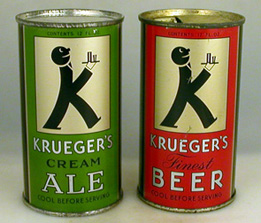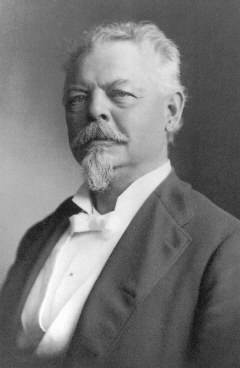Germans and their beer – Part 2
- 28. April 2017 - Emigration, General, German-American, History, Knowledge, Personalities, Professions
As announced before, today we will report about breweries that were founded by German emigrants in the USA.
German brewers in the United States
No more than Germans invented beer they were the first to brew it in the USA. Breweries are documented from the 17th century at the latest. Until the middle of the 19th century they mostly produced British-style ale. This changed with enhanced immigration from Germany and the associated higher demand for lighter lager. This was met by German brewers from about mid-century. Until the end of the 19th century lager had become the predominant beer in the USA. And especially German-American brewers like Busch, Pabst or Schlitz had made themselves known.
Until after the Civil War production and consumption of beer were mostly local and characterized by small breweries. Lager didn’t transport well over long distances, because it had to be kept cool. This changed with innovations like cooling options and pasteurization. Beer was transported all over the country by ship or train. Beer consumption increased, at first even benefitted by the temperance movement as beer with its relatively low alcoholic strength was seen as a compromise. It was usually served from the keg in bars or taverns operated or owned by the breweries themselves.
The German born brewers and their descendants were highly esteemed community-members. They gave money for charity and often supported the German-American community. Many even took up political office. There were close contacts between the brewery-dynasties as well, even marriages. Had there been reservations against the German communities before, they were enhanced with the American entry into World War I – a welcome opportunity for the temperance movement to attack the beer industry.
Prohibition, lasting from 1920 to 1933, lead to a dramatic decrease in breweries. Especially small breweries often changed their profession completely. Bigger breweries rather switched to the production and distribution of near beer with less than one half percent of alcohol, grain products and various beverages. They also invested into motorized delivery vehicles and bottling, that became more and more important.
When in 1933 prohibition was lifted, these breweries were soon back in business. Their experiences as beverage producers and distributors during the prohibition helped them. There was a fundamental change from keg to bottle and later even can that they were better equipped for. A rationing of grain due to World War II led to a further decrease in breweries, while the big companies were able to increase their sales. A market with relatively few suppliers that was dominated by big companies emerged. It was not until the end of the 1970s/beginning of the 1980s that due to the craft beer movement a revitalization of a varied brewing scene took place. In percentages of sales these breweries still only constitute to a small part of the market.
The oldest still producing brewery of the United States
D. G. Yuengling & Son is officially the oldest still producing US-brewery. In 1829, it was founded as Eagle Brewery in Pottsville (Pennsylvania) by David Gottlieb Jüngling. He was born on 2 March 1808 in Aldingen (Württemberg) as a son of a brewer and immigrated to America in 1823. There he anglicized his name. In 1873, the brewery was renamed D. G. Yuengling & Son when his son Frederick became partner. David Gottlieb Yuengling was an active member of his community until he died on 27 September 1877.
The brewery survived prohibition by selling near beer, producing ice cream and operating two dance halls in Philadelphia and New York City. At the end of prohibition they released a Winner Beer and send a truckload of it to the White House as appreciation.
The brewery is still owned by the family, in the fifth generation by now. Currently it is run by Richard L. “Dick” Yuengling Jr.
The first beer can came from America – from the brewery of a German
Shortly after prohibition the triumph of the beer can started. The first one was put on the market by the Gottfried Krueger Brewing Company on 24 Januray 1935 (after there had been tastings in 1933). Compared to today the can was with 100g quite heavy and it was made out of tinplate instead of aluminum. It was opened with a special tool; today’s tab wasn’t developed yet. Still it was a bestseller instantly and soon several types of canned beer were sold. Crucial advantages were the easier stackability as well as transportability. In Germany the first beer can was sold in 1951.
In 1837, Gottfried Krueger was born in Germany. He came to America in 1953 when he was only 16. He was trained in the brewery of his uncle John Laible in Newark, Adams & Laible. In 1858 he followed his uncle to his new brewery and in 1865 the company was named Hill and Krueger Brewery when Krueger and Laible teamed up with Gottlieb Hill. 10 years later Krueger was the sole owner. Later the brewery became known as Gottfried Krueger Brewing Company. Krueger was politically involved and held official positions. The brewery survived prohibition by producing near beer and other beverages. In 1926, before prohibition ended, Gottfried Krueger died. But the biggest success of the company was yet to come: the beer can, invented under William Krueger. The Gottfried Krueger Brewing Company was closed in 1961 and the brand was sold.
One of the big: Pabst Brewing Company
In 1844, brewer Jacob Best Sr. (1786-1861) and his four sons founded the Empire Brewery in Milwaukee which in the end became known as Pabst Brewing Company. Two of the Best-brothers already immigrated from Mettenheim (Hesse) in 1942. They were producing vinegar. The rest of the family followed them.
As the first brewery in Milwaukee it produced lager from 1851 onwards. There were enough customers for sure. In 1850, Germans were with 40% the largest group in Milwaukee. After his father had retired in 1853 and his three brothers had withdrawn from the company as well, Phillip Best, born in 1814, was the sole owner in 1859. He renamed the brewery Phillip Best Brewing Company.
Frederick Pabst, actually Johann Gottlieb Friedrich Pabst, was born on 28 March 1836 in Nikolausrieth. In 1848, he emigrated as a 12-year-old together with his parents. He worked as a pageboy and later as a cabin boy on the Great Lakes. In 1857, he became captain. In this function he met Philip Best in 1859 and later married his daughter Maria in 1862. After surviving a ship accident in the year after that, he switched professions and became partner in his father-in-law’s brewery. In 1864, he took over half of the shares. Two years later Emil Schandein, the husband of Best’s second daughter Lisette and of German origin as well, acquired the other half. Phillip Best died in 1869.
From 1873 onwards Pabst was president of the company. In 1874, it was the biggest brewery in the USA for the first time. After Schandein died in 1888, the brewery was renamed Pabst Brewing Company in 1889. The beer was known and sold beyond the region. Responsible for the success was not only the production of lager but also the use of new production technologies as well as good marketing. For example, Pabst started to tie a blue ribbon around the neck of every bottle of Pabst’s Select in 1882. Soon it was known under the name of Blue Ribbon and finally, in 1898, it was officially called so. On 1 January 1904 Frederick Pabst died in Milwaukee.
The families Best, Schandein and Pabst all were engaged in political, social and/or cultural causes. Frederick Pabst was a regular and generous donator. He supported amongst others the German-American community. For example, after a fire in the German theater of the town in 1890, he financed a new one in 1895, the Pabst Theater.
The company survived prohibition by producing near beer, malt extract, syrup and cheese. Between 1961 and 1979 it was the third biggest national brewery. Today it’s not owned by the family any more. It was sold in 1985 and since changed owners more than once. In 1996 the original brewery in Milwaukee was closed, subsequently all beer production was outsourced.
Today, the Anheuser-Busch brewery is even better known than Pabst. We will write about it next week.



0 comments